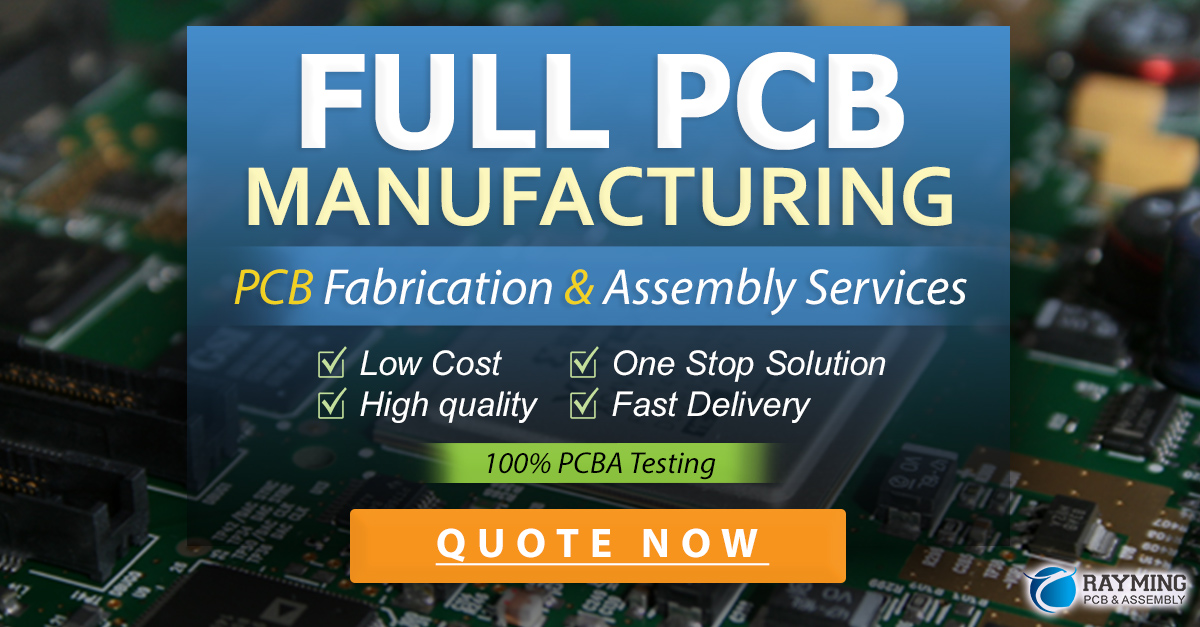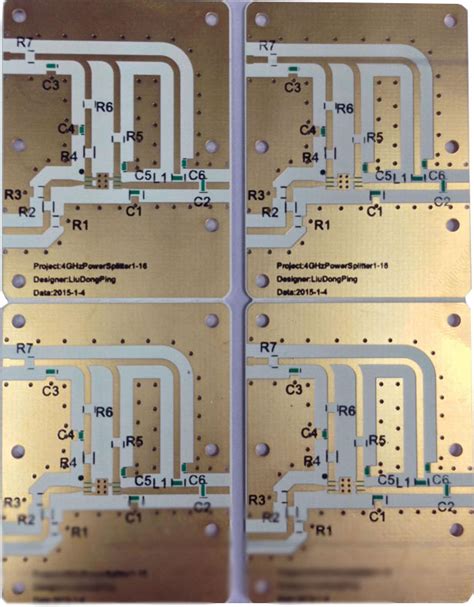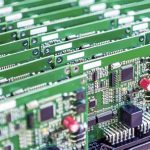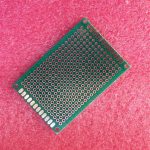Advantages of Ceramic PCBs
1. High Temperature Resistance
One of the primary advantages of ceramic PCBs is their ability to withstand high temperatures. Ceramic materials have a much higher melting point compared to FR-4, allowing them to operate in environments with extreme temperatures without degradation.
| Material | Maximum Operating Temperature |
|---|---|
| FR-4 | 130°C |
| Alumina | 450°C |
| Beryllia | 300°C |
2. Excellent Thermal Conductivity
Ceramic PCBs offer superior thermal conductivity compared to traditional PCBs. This property allows for efficient heat dissipation, making ceramic PCBs ideal for applications that generate a significant amount of heat, such as power electronics and high-power LED lighting.
| Material | Thermal Conductivity (W/mK) |
|---|---|
| FR-4 | 0.3 |
| Alumina | 24 |
| Beryllia | 260 |
3. Low Dielectric Constant and Loss Tangent
Ceramic materials have a low dielectric constant and loss tangent, which makes them suitable for high-frequency applications. These properties minimize signal loss and distortion, ensuring better signal integrity and performance.
| Material | Dielectric Constant @ 1 MHz | Loss Tangent @ 1 MHz |
|---|---|---|
| FR-4 | 4.7 | 0.02 |
| Alumina | 9.8 | 0.0001 |
| Beryllia | 6.5 | 0.0004 |
4. Dimensional Stability
Ceramic PCBs exhibit excellent dimensional stability, maintaining their shape and size even under harsh conditions. This stability is crucial for applications that require precise component placement and alignment, such as in aerospace and military systems.
5. Chemical and Corrosion Resistance
Ceramic materials are highly resistant to chemicals and corrosion, making ceramic PCBs suitable for use in harsh environments where exposure to corrosive substances is a concern. This property ensures the longevity and reliability of the PCB in demanding applications.
Common Ceramic PCB Materials
1. Alumina (Al2O3)
Alumina is the most widely used ceramic material for PCBs. It offers a good balance of properties, including high thermal conductivity, excellent electrical insulation, and good mechanical strength. Alumina PCBs are commonly used in high-power applications, such as power electronics and LED lighting.
2. Beryllia (BeO)
Beryllia is another popular ceramic material for PCBs, known for its exceptionally high thermal conductivity. It is an excellent choice for applications that require efficient heat dissipation, such as high-power RF and microwave circuits. However, beryllia is toxic in its powder form, requiring special handling during manufacturing.
3. Aluminum Nitride (AlN)
Aluminum nitride is a ceramic material that combines high thermal conductivity with a relatively low dielectric constant. These properties make it suitable for high-frequency applications that also require efficient heat dissipation, such as in radar systems and satellite communications.
Manufacturing Process of Ceramic PCBs
The manufacturing process of ceramic PCBs differs from that of traditional PCBs due to the unique properties of ceramic materials. The process typically involves the following steps:
-
Green Tape Casting: A slurry containing ceramic powder, binders, and solvents is cast onto a carrier film to form a thin, flexible green tape.
-
Punching and Cutting: The green tape is punched or cut to create vias, holes, and other features required for the PCB design.
-
Screen Printing: Conductive paste, usually containing silver or gold, is screen-printed onto the green tape to form the circuit patterns.
-
Stacking and Lamination: Multiple layers of printed green tape are stacked and laminated together under high pressure and temperature to form a solid, multilayer structure.
-
Sintering: The laminated stack is sintered in a high-temperature furnace, typically between 1,500°C and 1,800°C, to densify the ceramic and create a strong, solid substrate.
-
Post-Processing: After sintering, the ceramic substrate undergoes additional processing steps, such as surface grinding, polishing, and metallization, to create the final PCB.

Applications of Ceramic PCBs
Ceramic PCBs find applications in various industries where their unique properties are advantageous. Some common applications include:
1. Automotive Electronics
In the automotive industry, ceramic PCBs are used in high-temperature applications, such as engine control units (ECUs), exhaust gas sensors, and brake systems. Their ability to withstand extreme temperatures ensures reliable performance in these demanding environments.
2. Aerospace and Defense
Ceramic PCBs are used in aerospace and defense applications that require high reliability and performance under harsh conditions. Examples include radar systems, satellite communications, and avionics.
3. Power Electronics
The excellent thermal conductivity and high-temperature resistance of ceramic PCBs make them ideal for power electronics applications, such as motor drives, inverters, and power supply units.
4. High-Frequency RF and Microwave Circuits
The low dielectric constant and loss tangent of ceramic materials make ceramic PCBs suitable for high-frequency applications, such as RF and microwave circuits used in telecommunications, wireless networks, and radar systems.
5. LED Lighting
Ceramic PCBs are used in high-power LED lighting applications due to their ability to efficiently dissipate heat generated by the LEDs. This helps to maintain optimal LED performance and longevity.
Frequently Asked Questions (FAQ)
1. Are ceramic PCBs more expensive than traditional PCBs?
Yes, ceramic PCBs are generally more expensive than traditional FR-4 PCBs due to the specialized materials and manufacturing processes involved. However, the higher cost is justified for applications that require the unique properties offered by ceramic PCBs.
2. Can ceramic PCBs be used for all applications?
No, ceramic PCBs are not suitable for all applications. They are primarily used in high-performance applications that require one or more of their unique properties, such as high-temperature resistance, excellent thermal conductivity, or low dielectric constant. For many standard applications, traditional FR-4 PCBs are sufficient and more cost-effective.
3. Are ceramic PCBs compatible with standard PCB Assembly processes?
Ceramic PCBs are generally compatible with standard PCB assembly processes, such as soldering and component placement. However, some adjustments may be necessary to accommodate the unique properties of ceramic materials, such as their higher thermal conductivity and different surface characteristics.
4. What are the limitations of ceramic PCBs?
Some limitations of ceramic PCBs include their higher cost compared to traditional PCBs, the brittleness of ceramic materials which can make them prone to cracking under mechanical stress, and the specialized manufacturing processes required, which may limit their availability and lead times.
5. Can ceramic PCBs be used in combination with other PCB materials?
Yes, ceramic PCBs can be used in combination with other PCB materials, such as FR-4, to create hybrid PCBs that leverage the benefits of both materials. For example, a hybrid PCB may use a ceramic substrate for high-temperature or high-frequency sections of the circuit, while using FR-4 for other sections to reduce overall cost.
Conclusion
Ceramic PCBs are a specialized type of printed circuit board that offer unique properties, such as high-temperature resistance, excellent thermal conductivity, and low dielectric constant. These properties make them ideal for high-performance applications in industries such as automotive, aerospace, power electronics, and high-frequency RF and microwave circuits.
While ceramic PCBs are more expensive and require specialized manufacturing processes compared to traditional PCBs, their superior performance in demanding environments justifies their use in critical applications. As technology continues to advance, the demand for ceramic PCBs is likely to grow, driven by the increasing need for reliable, high-performance electronic systems in various industries.






Leave a Reply